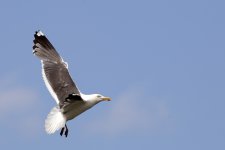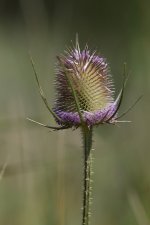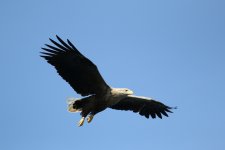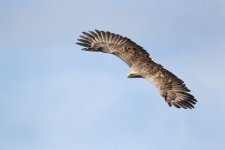Chotacabras
Active member
Hello
I am coming back to SLR photography in general, and bird photography in particular, after a 20-year break. I just bought a second-hand 5dii and 300mm f4. I have a good tripod but can't afford a 1.4x teleconverter (or indeed the 20mm f2.8 I hanker after) this month. I know a crop-frame body would give better reach, but I wanted full-frame for other reasons. I like the close focus of the 300mm. Of course I know a 500mm f5.6 (for example) would be nice, but I can't afford that now.
That said, I'm sure it's possible to get great images with just 300mm. For example, using hides and similar; going for approachable birds like robins and gulls, and/or large birds; using tripod and remote control; looking for images that don't need a single bird to fill the frame...
Any tips? Any nice images that you or others have taken with just 300mm or less? Without TC!
Thanks!
I am coming back to SLR photography in general, and bird photography in particular, after a 20-year break. I just bought a second-hand 5dii and 300mm f4. I have a good tripod but can't afford a 1.4x teleconverter (or indeed the 20mm f2.8 I hanker after) this month. I know a crop-frame body would give better reach, but I wanted full-frame for other reasons. I like the close focus of the 300mm. Of course I know a 500mm f5.6 (for example) would be nice, but I can't afford that now.
That said, I'm sure it's possible to get great images with just 300mm. For example, using hides and similar; going for approachable birds like robins and gulls, and/or large birds; using tripod and remote control; looking for images that don't need a single bird to fill the frame...
Any tips? Any nice images that you or others have taken with just 300mm or less? Without TC!
Thanks!








